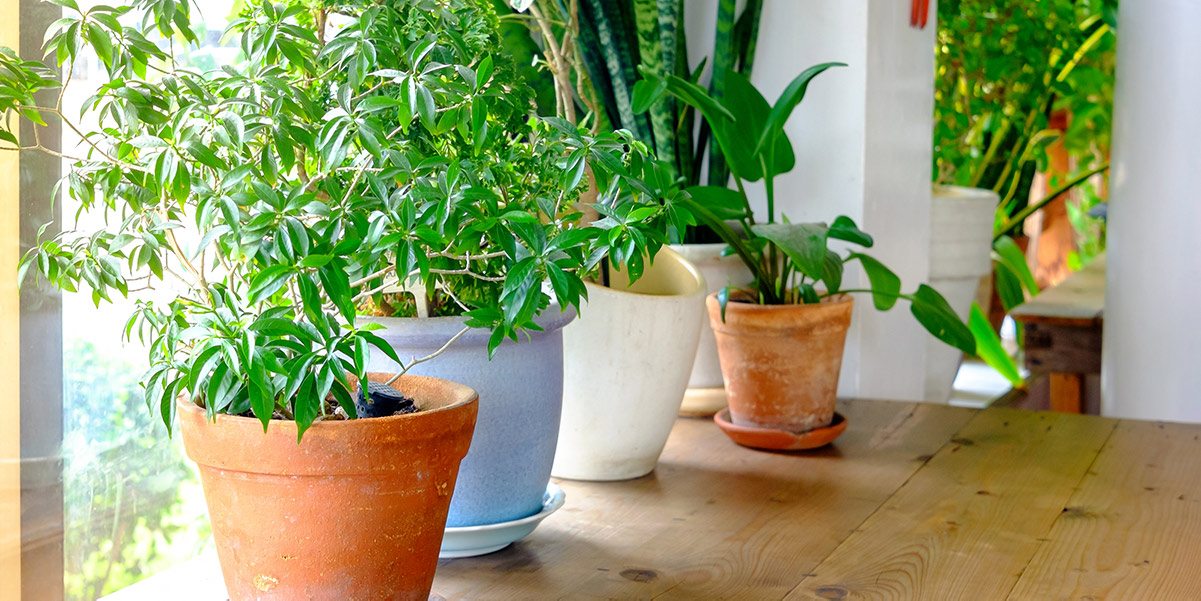7 Indoor Plant Must-Haves In 2020

While some folks spend a lifetime curating the perfect art collection in their homes, the secret to an eye-catching interior actually lies in the art you make yourself (and we’re not talking about the macaroni mosaics you threw together in kindergarten). We’re talking about plants. More specifically, indoor plants. Not only are they a living breathing testament to your ability to ‘adult’ but they have the ability to transform the look and feel of your home. Plus, they improve the quality of air inside it and they come at a fraction of the price you’d pay for an authentic Van Gogh.
Here are 7 must-have indoor plants in 2020:
Philodendron Xanadu
Fortunately, the Philodendron Xanadu is a lot easier to maintain than it is to pronounce. This indoor number has a very tropical feel to it, thanks to its glossy lobed leaves, and can turn any bare and boring foyer into an urban jungle. Thankfully it’s a very compact plant, which means it won’t venture far from its pot once planted.
Plant pointer: The Philodendron Xanadu thrives in direct sunlight and moist, well-drained soil.
Phalaenopsis Orchid
Also known as ‘moth orchids’, the Phalaenopsis Orchid is a drop-dead gorgeous flowering pot plant that’ll brighten up any office desk, windowsill or mantelpiece. The vibrant purple and white flowers have a long lifespan, in fact, the whole plant will give your purebred Cavoodle a run for its money, typically continuously growing and flowering until someone forgets to water it…
Plant pointer: This little plant prefers warm and brightly lit spots out of direct sunlight. It also thrives on humidity, so stand the pot on a tray of pebbles filled with water and mist the leaves on very hot days.
Peace Lily
Growing to roughly 30 centimetres in height, the dark and glossy Peace Lily is already a staple in many contemporary urban offices. The rich green leaves and delicate white flowers will not only break up empty and dull spaces in your home, but it’ll almost certainly get a nod of approval from Mum.
Plant pointer: The Peace Lily doesn’t need too much light and prefers very moist soil. If it’s dry to touch, it’s time to reach for the watering can.
Fiddle Leaf Fig
The Fiddle Leaf Fig is the Meryl Streep of the indoor plant world – anyone who’s ever seen one in action instantly adores them. Their big glossy leaves are an interior designer’s dream and the plant itself can grow up to two metres tall. If you’ve got a sculpture sized gap near a window, a Fiddle Leaf Fig plant would be a fantastic investment for your decor.
Plant pointer: Keep it away from direct sunlight, make sure it’s always moist and avoid over-watering the plant as it can suffer from root rot.
String of Pearls
This quirky plant is a perfect addition to any kitchen. Just like its jewellery counterpart, the String of Pearls will be turning heads and garner envious looks at all your dinner parties. Plus, if you steal a cutting or two from a neighbour and pop it in a spare pot of soil, it’ll take root easily.
Plant pointer: Put this little guy in bright and direct light, give it a drink every month (or every two weeks in summer) and keep it away from cold air to avoid leaf drop.
Mother-In-Law’s Tongue
If your mother-in-law’s anything like this common indoor plant, she’s tall, slender and extremely popular in Bunnings. This vertical succulent is a statement-maker in any home, reaching heights of up to 120 centimetres and turning heads with its stripy green leaves.
Plant pointer: To keep Mum happy, make sure you ease off the water, especially in winter, as she prefers soil that’s a little dry.
Devil’s Ivy
Devil’s Ivy is a tropical plant which, in its native environment, can grow up to 40 feet long. Most single storey townhouses will find it hard to accommodate indoor plants of this size, fortunately housebound plants typically don’t grow longer than eight feet. One pro of Devil’s Ivy is that you can train the vines to grow around windows by attaching support hooks along the frame. One con is that it’s very poisonous to cats.
Plant pointer: Devil’s Ivy doesn’t appreciate soggy soil, which is why you should empty the saucer under the pot once the excess water has drained through and ensure the top inch or two is dry.
Disclaimer:
This article is written to provide a summary and general overview of the subject matter covered for your information only. Every effort has been made to ensure the information in the article is current, accurate and reliable. This article has been prepared without taking into account your objectives, personal circumstances, financial situation or needs. You should consider whether it is appropriate for your circumstances. You should seek your own independent legal, financial and taxation advice before acting or relying on any of the content contained in the articles and review any relevant Product Disclosure Statement (PDS), Terms and Conditions (T&C) or Financial Services Guide (FSG).
Please consult your financial advisor, solicitor or accountant before acting on information contained in this publication.
© 2017-2024 MoneyQuest Australia Pty Ltd, Australian Credit Licence 487823
